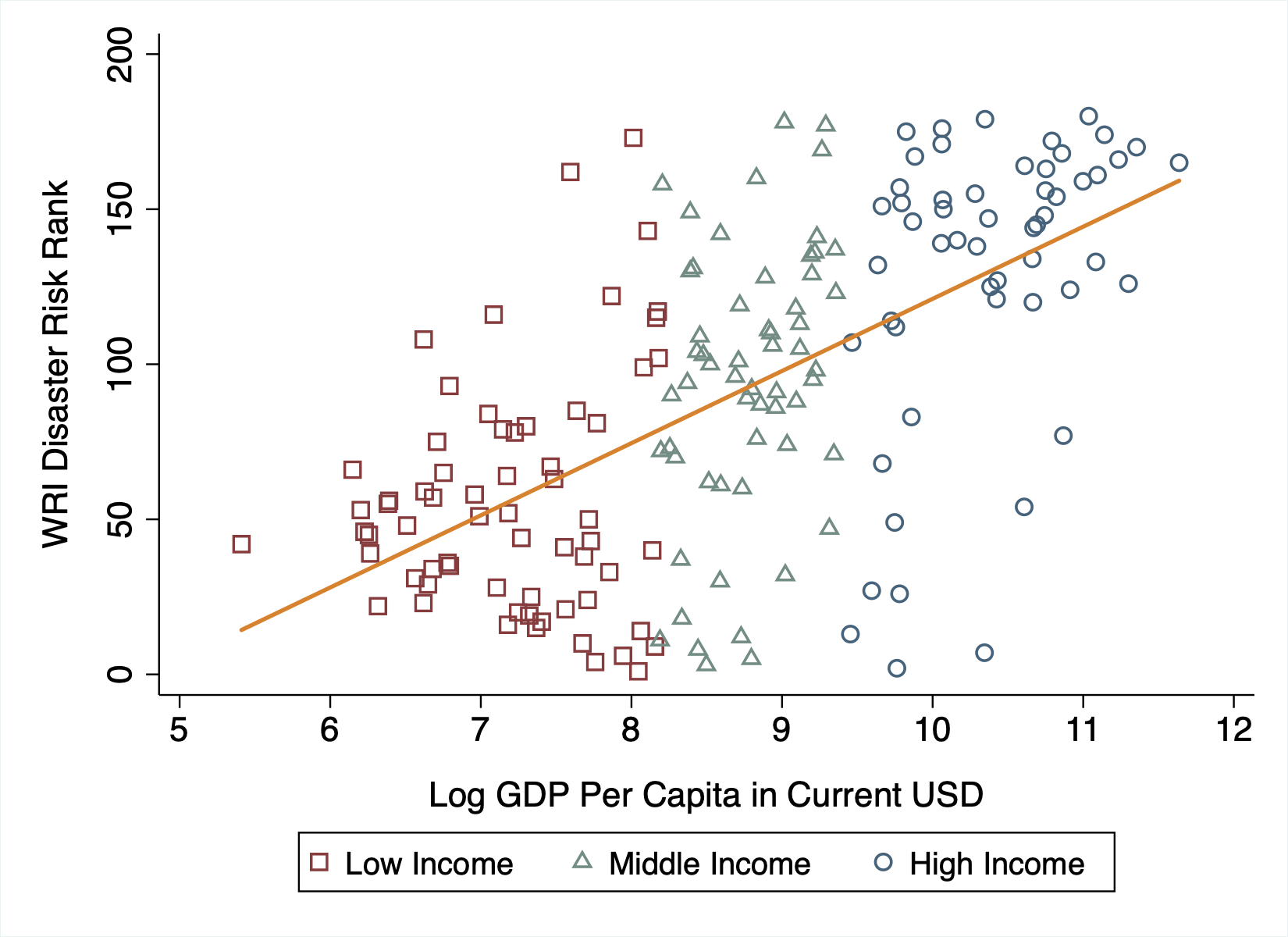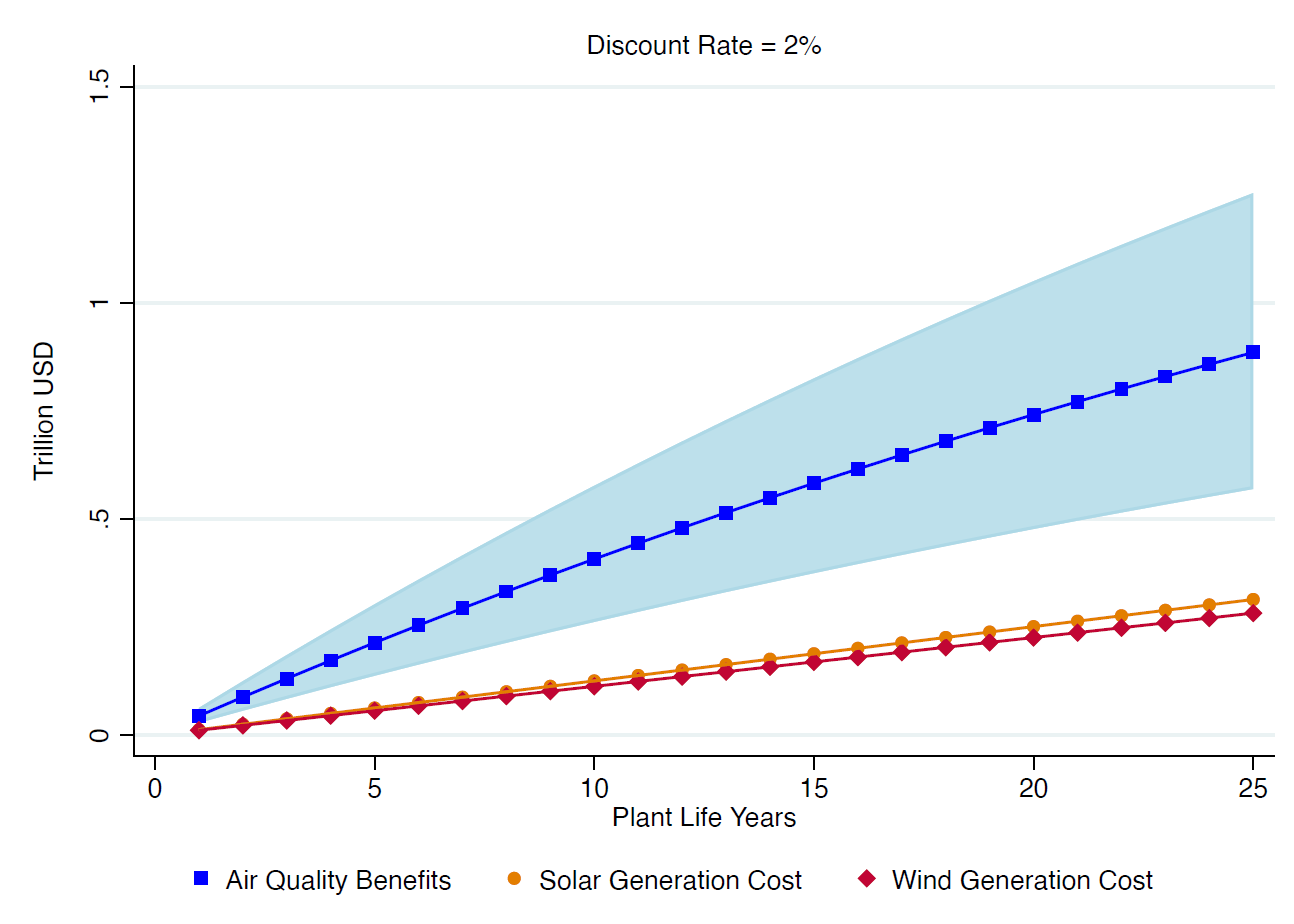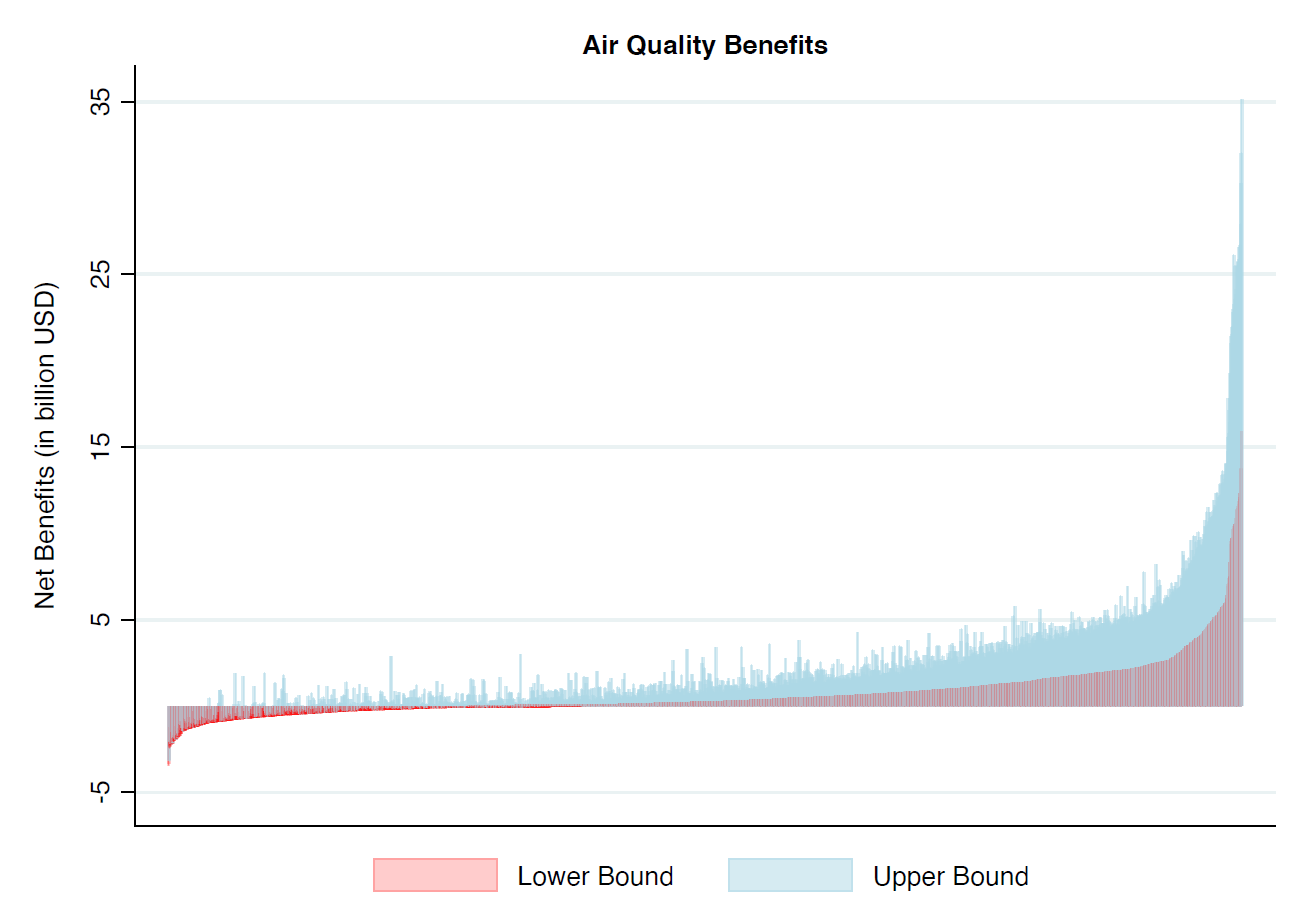
Phasing out coal power is key to fighting climate change. This article shows that air quality benefits alone are sufficient to justify a move away from coal-fired power
Phasing out coal-fired power and replacing it with less-polluting alternatives is a crucial part of efforts to combat climate change. Moreover, while many governments have been moving in that direction, there is much that remains to be done. Pressure from citizens is a potentially important driver of this transition (Besley and Persson 2023). Although most of the coal power plants in the United States and in Western European countries have been scheduled for retirement, coal-powered generation is still expanding in fast-growing nations like India and China. Coal is a highly polluting energy source with detrimental consequences for both air quality and climate change. But we know little about how those who reside near coal-fired power plants perceive its negative consequences.
In our research (Besley and Hussain 2023), we investigate whether perceptions of air quality are affected by proximity to coal-fired power stations using global attitudes data on ambient air quality perceptions from the Gallup World Poll. We measure local effects by exploiting spatial granularity in the data at the geocode level, i.e. latitudes and longitudes of survey respondents. We are therefore able to detect whether respondents live within 40 km of a coal power plant in 51, mostly low- and middle-income, countries and show that those who reside within the 40 km band are more dissatisfied with the ambient air quality.
We use these findings to construct a measure of the economic benefits of closing existing coal-fired power plants. To do so, we use a life satisfaction approach that follows previous research such as Frey et al. (2010) and Layard et al. (2008). We begin by demonstrating a positive relationship between air quality satisfaction and life satisfaction, along with a positive relationship between income and life satisfaction. Comparing the two can generate an “income equivalent” to air quality dissatisfaction that can be used to estimate the net benefits of transitioning towards solar and wind energy. A key finding is that the benefits from air quality improvements when shutting down coal-fired power stations are large enough to justify investing in this element of a green transition.
Studying low- and middle-income countries
Data availability has meant that much of the prior research on climate change within environmental psychology has concentrated on the developed world, primarily the United States and the Europe (Poortinga et al. 2019). However, climate change damages are predicted to fall disproportionately on the Global South (Cruz and Rossi-Hansberg 2021). Moreover, increases in energy demand are predicted to come from the countries that continue to rely heavily on coal to meet their energy needs. It is important therefore to study low- and middle-income countries.
Figure 1: Relationship between country-level disaster risk and GDP per capita

Notes: This chart presents a scatterplot of the WRI country-level disaster risk rankings and country-level GDP per capita in 2019. Rankings are in decreasing order i.e., countries with lower ranks are at higher risk of damages caused by disaster events. The ranking considers exposure, vulnerability, susceptibility, coping capability, and adaptive capacity of the overall country. This data is generated and maintained by the United Nations University. Low-, middle-, and high-income country classification is done by partitioning the countries in three quantiles based on their 2019 GDP per capita numbers as reported in the World Bank national accounts data.
Linking location and perceptions
Across the world, particularly in democracies, policies to reduce carbon emissions are more likely if citizens demand change. Hence, it is crucial to know about the factors that drive citizens’ perceptions of their local environment. The positive relationship between being located near to a coal-fired power station and dissatisfaction with ambient air quality does suggest that there could be a latent demand for change, especially when citizens are given access to research findings that show that there are aggregate, not just individual, benefits.
Estimating the benefits of clean air and green energy transition
Scientific evidence has emphasised the negative effects of power plant emissions on health. Notwithstanding, there are people with a stake in maintaining the status quo, particularly owners of “stranded assets” and those employed in the sector. It is not surprising, therefore, that they will fight against such policies. A better understanding is needed of these distributional effects and how to design policies that mitigate negative consequences on individuals and communities, especially if that creates a backlash against environmental policies.
Perceptions of air quality offer an insight into how people value air quality and hence what would be the implicit income-equivalent benefits (often called willingness to pay) for moving away from coal-fired power. This does not mean that people will pay in practice; it is purely a way of “calibrating” the income equivalent of an improvement in air quality.
Using the quantitative relationship between the well-being indicator in our data, measured on a 10-step Cantril ladder, and income and air quality dissatisfaction level, we estimate the income-equivalent of moving residents dwelling in the 0-40 km distance band to outside that band, where air quality is superior. Figure 2 shows that this transition is feasible even if we take a cautious view of the estimates of benefits that come from air quality improvements. The policy experiment shown below entails phasing out coal-fired power at a constant rate of 4% per year and replacing that free capacity with solar or wind generation over a period of 25 years – put simply, the benefits from air quality improvements outweigh the costs of replacing coal.
Figure 2: Air quality improvements cost-benefit analysis

Notes: Chart shows the cost-benefit results for all 51 countries combined. The blue line represents point estimates of air quality benefits with the shaded area showing upper and lower bounds on the estimates. The costs of solar and wind energy generation are calculated by multiplying their respective source-specific average global LCOE values in USD/kWh with the total excess energy demand because of closing of coal plants.
Practically speaking, decisions of policymakers to bring about a green transition involve deciding whether to decommission specific coal-fired power plants. We can look at this policy strategy by looking at the benefits of closing specific coal-fired power stations. Figure 3 gives the plant-level net benefits for all operational coal-fired power plants across the world in 2019 and offers a clear sense of the distribution of benefits.
Figure 3: Plant-level net benefits from closing all coal-fired Power Plants

Notes: Chart shows the net benefits from closing all the operational coal-fired power in 2019 located across the whole world. The parameter values are taken from the global estimates using all the 51 countries combined. The policy experiment entails phasing out coal-fired power and replacing that free capacity with 50% solar and 50% wind generation. The two shaded regions in both plots represent upper and lower bounds of the benefits estimates.
Above all, this makes clear that replacing coal plants with solar and wind generation units would be beneficial in almost every case. Importantly, this benefit only accounts for the value of air quality improvements, and would rise if including the benefits of reduced carbon emissions from phasing out coal. This evidence portrays a compelling case against coal to policymakers in low- and middle-income countries for the sake of their own citizens, aside from broader international debates on carbon emissions and climate change.
Editor's note: Another article covering this research can be found on IdeasforIndia.
References
Besley, T and A Hussain (2023), “Global Gains from a Green Energy Transition: Evidence on Coal-Fired Power and Air Quality Dissatisfaction.” CEPR Discussion Paper, no. 18046
Besley, T and T Persson (2023), “The Political Economics of Green Transitions.” Quarterly Journal of Economics, 138(3): 1863-1906
Cruz, J-L, and E Rossi-Hansberg (2021), “The Economic Geography of Global Warming.” University of Chicago, Becker Friedman Institute for Economics Working Paper nos. 2021-130
Frey, B S, S Luechinger, and A Stutzer (2010), “The Life Satisfaction Approach to Environmental Valuation.” Annual Review of Resource Economics, 2:139-160
Layard, R, G Mayraz, and S Nickell (2008), “The Marginal Utility of Income.” Journal of Public Economics 92(8-9): 1846–1857
Poortinga, W, L Whitmarsh, L Steg, G Bohm, and Stephen Fisher (2019), “Climate Change Perceptions and Their Individual-Level Determinants: A Cross-European Analysis.” Global Environmental Change 55:25–35


